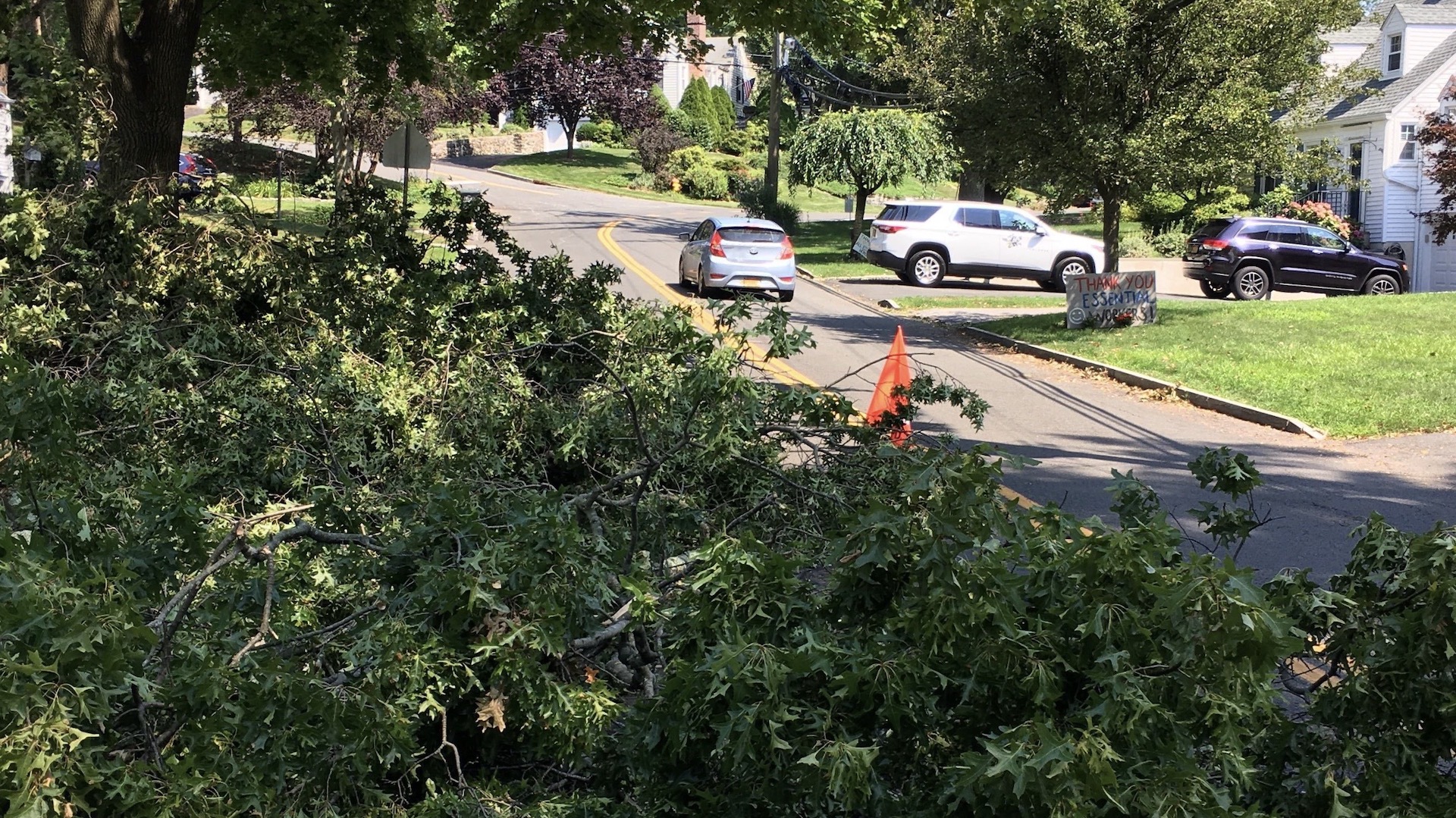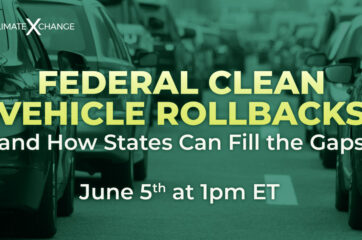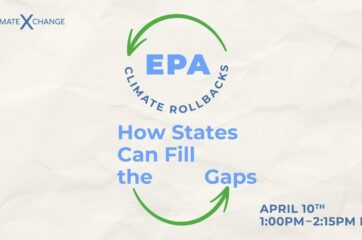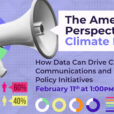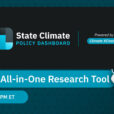The Conforti brothers, owners of a small restaurant in West Caldwell, New Jersey, were doing everything they could to re-open their business safely amid the ongoing COVID-19 pandemic. They emptied their savings to turn their parking lot into outdoor dining, purchasing tents, tables, charis, outdoor electricity, and more to keep their customers and employees safe.
Then, Hurricane Isaias hit.
“Everything was destroyed,” Nick Conforti said, adding, “all the tents were torn apart. A lot of tables and chairs broke. They snapped in half. [A] tree landed on table[s] and chairs.”
For millions of people from North Carolina to Maine, Hurricane Isaias has caused great destruction, resulting in power outages and damage across the East Coast that haven’t been this widespread since Hurricane Sandy.
The storm even brought with it two tornados, one that touched down in North Carolina and the other in New Jersey, an extremely unusual occurrence for the area. The lack of preparedness for the storm’s ferocity led to at least nine deaths, many resulting from fallen trees and power lines in the storm’s wake.
Hurricane Isaias is the ninth storm to hit the East Coast so far this hurricane season, an unprecedented number for how early we are in its duration (hurricane season runs from June 1st to November 30th). Still, 2020’s hurricane season is far from over, and experts predict that this year will continue to produce storms at a rate much higher, and more intense, than average.
On top of the coronavirus pandemic beginning to worsen again in many of these same states, it may seem like this year can’t get any worse. But realistically, science tells us that 2020 may be a glimpse into what the future could look like without addressing or preparing for climate change: a series of disasters that continuously strike against our communities.
Why is hurricane season so much worse this year?
There is no question that human-caused climate change is spurring the heightening hurricane seasons we’ve seen the past few years. In 2017, Hurricanes Irma, Harvey, and Maria hit, in 2018, Hurricanes Florence and Michael, then last year, the destructive Hurricane Dorian. And this year — the worst hurricane season yet. But how exactly does climate change contribute to worsening hurricanes?
Hurricanes thrive off of warm, moist air — high humidity and ocean temperatures are what cause them to form and grow. The higher the temperature, the larger they are able to expand, causing them to be more destructive and longer-lasting.
When humans release carbon dioxide into the air, the majority of its heat energy is absorbed by our oceans. Since the 1970s, this means the oceans have incurred 90% of our emissions’ heat. On average, this results in an ocean temperature increase of 0.1°C per decade. This is expected to dramatically rise over the next ten years — the top layer of the ocean is now warming 24% faster than it was even just a few decades ago.
0.1°C per decade might not seem like a big difference to us, but consider the vast size of the ocean. It takes a massive amount of heat in the atmosphere for its temperature to increase even slightly, and that increase can have really profound effects. Primarily, this temperature increase creates more suitable conditions for hurricanes to form and build into bigger forces that carry more precipitation and stronger winds. Increasing temperatures also allow hurricanes to hit places they haven’t been able to reach in the past, where infrastructure is less prepared to deal with these types of storms — both further inland and further north.
Continuous warming of the oceans also prompts sea level rise, because water expands when it heats up. This also contributes to a worsening hurricane season, as higher sea levels provide a higher starting point for storms as they approach the coast, allowing storms to gather more momentum and carry further inland.
All of these factors contribute to a more destructive hurricane season and more flooding when storms hit, explaining the increasing danger we’ve seen hurricanes carry with them the past few decades. Professor Michael Mann from Pennsylvania State University, a leading expert in atmospheric science, told Climate XChange, “We’re likely to see more active seasons, and almost certainly we’ll see more destructive storms as long as we continue to warm up the planet through fossil fuel burning and other human activities increasing the concentration of greenhouse gases in the atmosphere.”
Disaster worsened by a lack of preparedness
Not only are humans contributing to climate change, therefore creating the conditions for these worsening storms, but we are also sorely unprepared for them.
Governor Andrew Cuomo of New York was quick to criticize utilities for their lack of preparation for Hurricane Isaias. Both Governor Cuomo and Governor Ned Lamont of Connecticut launched investigations into their respective utility industries because of their “apparent lack of adequate planning.” After Hurricane Sandy ravaged the Northeast in 2012, both states called for utilities to have better procedures in place for similar disasters, but Hurricane Isaias has proved that these measures may not be enough.
“Several years ago, Connecticut experienced large-scale outages that took days to recover from, and we were told that the utilities were improving their resources so that they can be prepared for the next time Mother Nature inevitably hits again,” Gov. Lamont tweeted, adding, “And now here we are, with a wholly inadequate response to another storm.”
In Connecticut, half a million people are still out of power — meaning that many have taken to public facilities to shower, cook, use electronic devices, or even just to have air conditioning. But in the middle of a pandemic, this comes with massive health risks as well.
“You’re seeing more and more people having to make the impossible choice between staying in their hot house with no food or going to a shelter in the middle of a global pandemic,” Representative Sean Scanlon from Guilford, Connecticut, said.
Hurricane Isaias proves that despite current government interventions, we need to take disaster preparedness much further throughout this country if we hope to survive worsening disasters.
How can we avoid the worst consequences of these disasters?
Policymakers must take more divisive steps to address worsening hurricane seasons. There are two major approaches to consider:
- Reducing our carbon emissions, which have caused hurricane seasons to increase in duration, frequency and intensity in the first place; and
- Better preparing for disasters and adapting to our changing planet
Reducing our carbon emissions
Without taking actions to reduce carbon emissions, hurricane seasons are going to continue to get more and more destructive. Policymakers have to begin prioritizing reducing carbon pollution and transitioning to an economy that is far less emissions-intensive.
There isn’t one singular policy that will make this happen. We need comprehensive, total reform if we hope to make the transition quickly enough to reduce the most severe climate impacts.
Recently, the understanding that a comprehensive approach to solving climate change, rather than relying on singular policies, has gained more traction. The Green New Deal, proposed in 2019, spurred this type of overarching climate policy, and since then, we’ve seen a variety of different approaches towards doing so. Most recently, the House Select Committee on the Climate Crisis came out with a broad-ranging climate action plan that includes more than 120 policy proposals, and Joe Biden, Democratic nominee for president, also released a sweeping plan to transition the United States to a renewable economy through a wide variety of policy options.
States have also been working to take more overarching proposals towards solving the climate crisis. Take the Massachusetts Roadmap Bill, which provides a very comprehensive approach to addressing climate change with a wide variety of provisions, including stricter emissions reductions targets, more robust reporting, an economy-wide carbon price, and investments in environmental justice communities, just to name a few.
Better preparing for future disasters
Even if we do take serious action to curb our current emissions, it will still not be enough to prevent worsening hurricane seasons all together — we’re already experiencing these effects today. We have to better prepare ourselves for these consequences, instead of turning a blind eye to the fact that climate impacts are heightening.
This can include a host of different policies. Creating better emergency preparedness systems and evacuation plans, updating building codes, allocating funding for disaster and recovery, and setting higher standards for utilities and industries are a few important avenues through which policy can reflect worsening hurricane seasons.
We’ve already seen more states take disaster preparedness into account recently. For example, Florida, for the first time in history, passed a bill this year acknowledging the danger of climate change and requiring state-funded buildings in coastal zones to take into account sea level rise before they begin to build.
But overall, the U.S. is very behind on this front, as we clearly just saw when Hurricane Isaias hit the East Coast, and state and local governments lacked the ability to properly prepare institutions for the storm.
Then, there is the lack of preparedness within the national government. When local governments are struggling to deal with needs during and after a large storm, it’s up to the Federal Emergency Management Agency (FEMA) to help out. But according to Brock Long, a FEMA administrator in 2017 and 2018, the agency is not at all prepared to do so.
“The current business model for the Federal Emergency Management Agency, and the expectations placed upon it by the public and Congress, are unrealistic at this point,” he told the New York Times.
Part of the problem is that FEMA’s model is very focused on building infrastructure back up in the exact same way it was before the storm hit. But as storms intensify and become more frequent, this doesn’t address the problem, and the infrastructure is quickly destroyed once again when the next storm hits.
“Instead, we must reassess which are the floodable areas according to the experience we have gained, and try to direct our new investments and infrastructure away from it,” Professor Martha Kohen, Director of the Center for Hydro-generated Urbanism, told Climate XChange. Moving important infrastructure away from flood zones, and improving building codes to prevent massive evacuation and destruction, are two important policies that experts agree need to be implemented.
What can we do to make these changes happen?
We know that our planet is changing due to climate change, and that we are too late to reverse some of its effects. It’s therefore vital that we push our local, state and national governments to both prepare for the increased disasters that are to come, and reduce emissions altogether to prevent some of the worst consequences from hurricanes and other disasters in the future.
For Professor Mann, this means voting officials into office who support a rapid transition away from the fossil fuel industry.
“We have an opportunity in the upcoming presidential election to vote for politicians who favor climate action and to vote out those who continue to advocate for fossil fuel interests rather than the citizens they’re supposed to represent,” he told Climate XChange.

